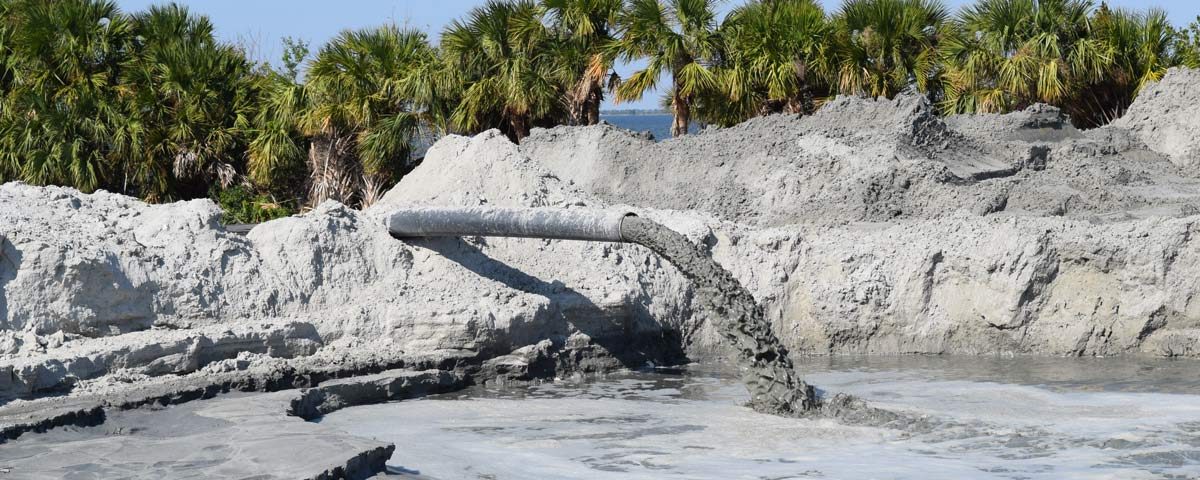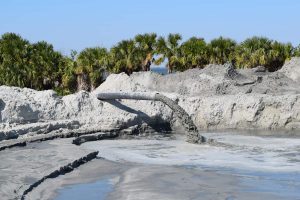Cocoa Beach muck dredging enters third phase

The city of Cocoa Beach pumps muck from the bottom of the Banana River Lagoon into a containment area.
Muck removal benefits Banana River Lagoon water quality
Palm Bay, Fla., Feb. 5, 2020 — A $7.3 million partnership project between the city of Cocoa Beach, Brevard County, the St. Johns River Water Management District and the Florida Department of Environmental Protection (FDEP) will remove 200,000 cubic yards of muck from 12 canals in the Banana River Lagoon — and along with it,189,000 pounds of total nitrogen and 115,800 pounds of total phosphorus.

The city of Cocoa Beach pumps muck from the bottom of the Banana River Lagoon into a containment area.
“Dredging has an immediate impact on water quality in the Banana River Lagoon,” said St. Johns River Water Management District Executive Director Dr. Ann Shortelle. “Restoring the health of the lagoon requires large projects and several funding partners. We’re in this together.”
“Collaboration is a vital component of environmental protection,” said Trina Vielhauer, director of DEP’s Division of Water Restoration Assistance. “DEP is proud to be a continued partner, along with the water management District and Brevard County, on this important project to restore the health of Indian River Lagoon.”
“We are thankful for our partnership with the District, the Save Our Indian River Lagoon Plan and FDEP/Brevard County for their assistance in this final phase of our residential muck dredging lagoon cleanup,” said Cocoa Beach Mayor Ben Malik. “Our waterways are a vital natural and economic resource that must be preserved. We must all work together to not only remove the muck from our waterways but to find out the causes of such and lower the inflow of nitrogen and pollutants into our waterways to save this precious resource for our future generations.”
“Brevard County is delighted to support the city of Cocoa Beach’s pro-active efforts to remove muck from canals along the Banana River,” said Virginia Barker, director of Brevard County’s Natural Resources Management Department. “We are seeing improved water clarity and reduced risk of fish kills in areas where muck has been removed by dredging. Muck removal improves lagoon health and jump starts recovery while we continue the long-term work to reduce upland sources of pollution.”
A half-cent sales tax is contributing $6.9 million to the project, plus the county has shared $3.6 million from a grant from the Florida Legislature for muck removal. The legislative appropriation for the three-phased, multi-year project is being disbursed through FDEP. The St. Johns District, a partner in three Cocoa Beach muck removal projects since 2016, is contributing $1.5 million through its Districtwide cost-share program.
Muck is a mix of fine-grained sediments, sand, clay and organic matter in untreated stormwater runoff that drains to canals and storm drains connected to the lagoon. Muck can accumulate nutrients that contribute to algal blooms and create detrimental conditions for seagrasses and organisms vital to the lagoon’s aquatic food chain.
Since 2015, Cocoa Beach has been working to remove 500,000 cubic yards of muck from the Banana River Lagoon portion of the Indian River Lagoon in several phases.
Dredging is expected to be completed by Sept. 2021.

